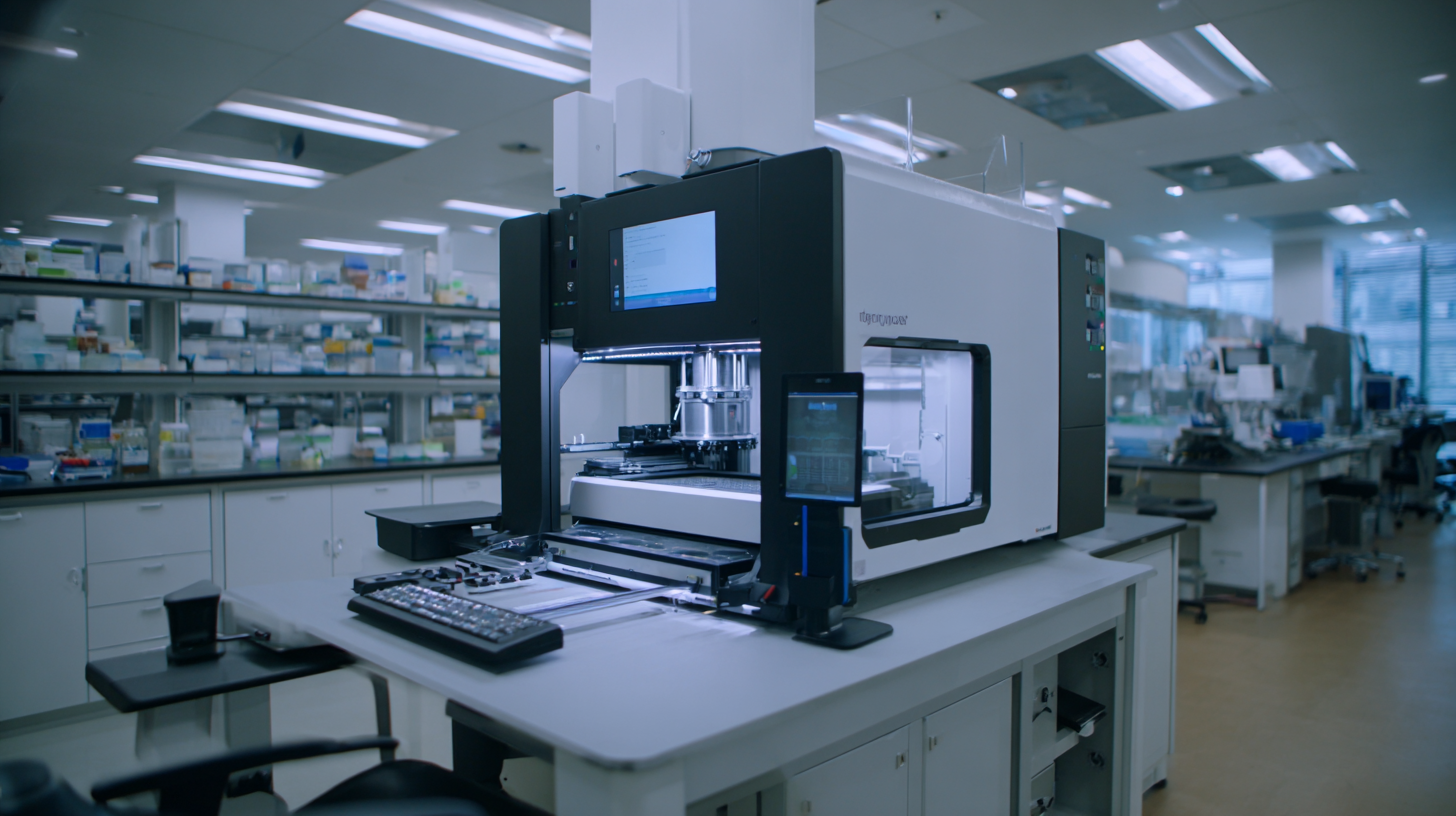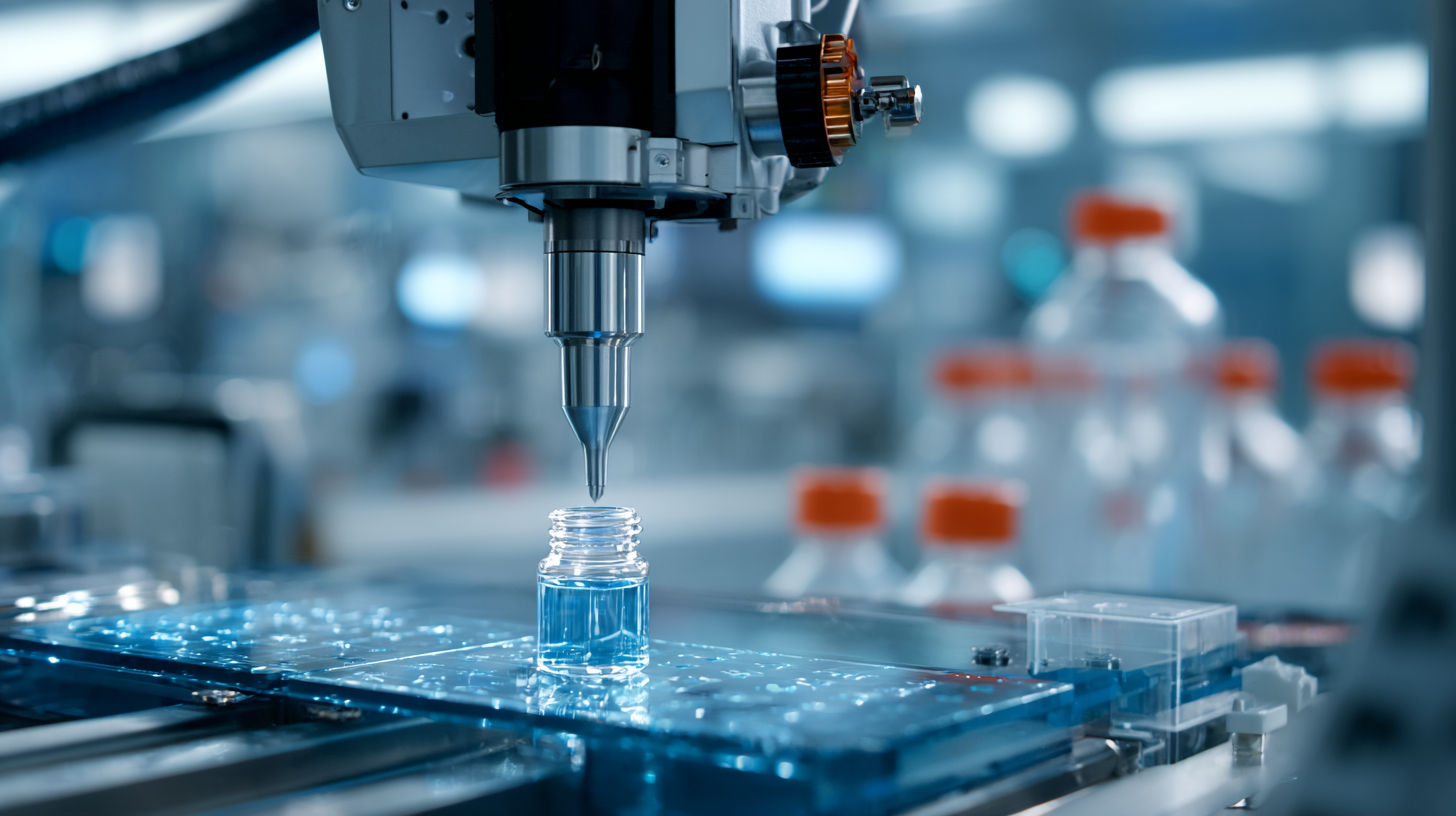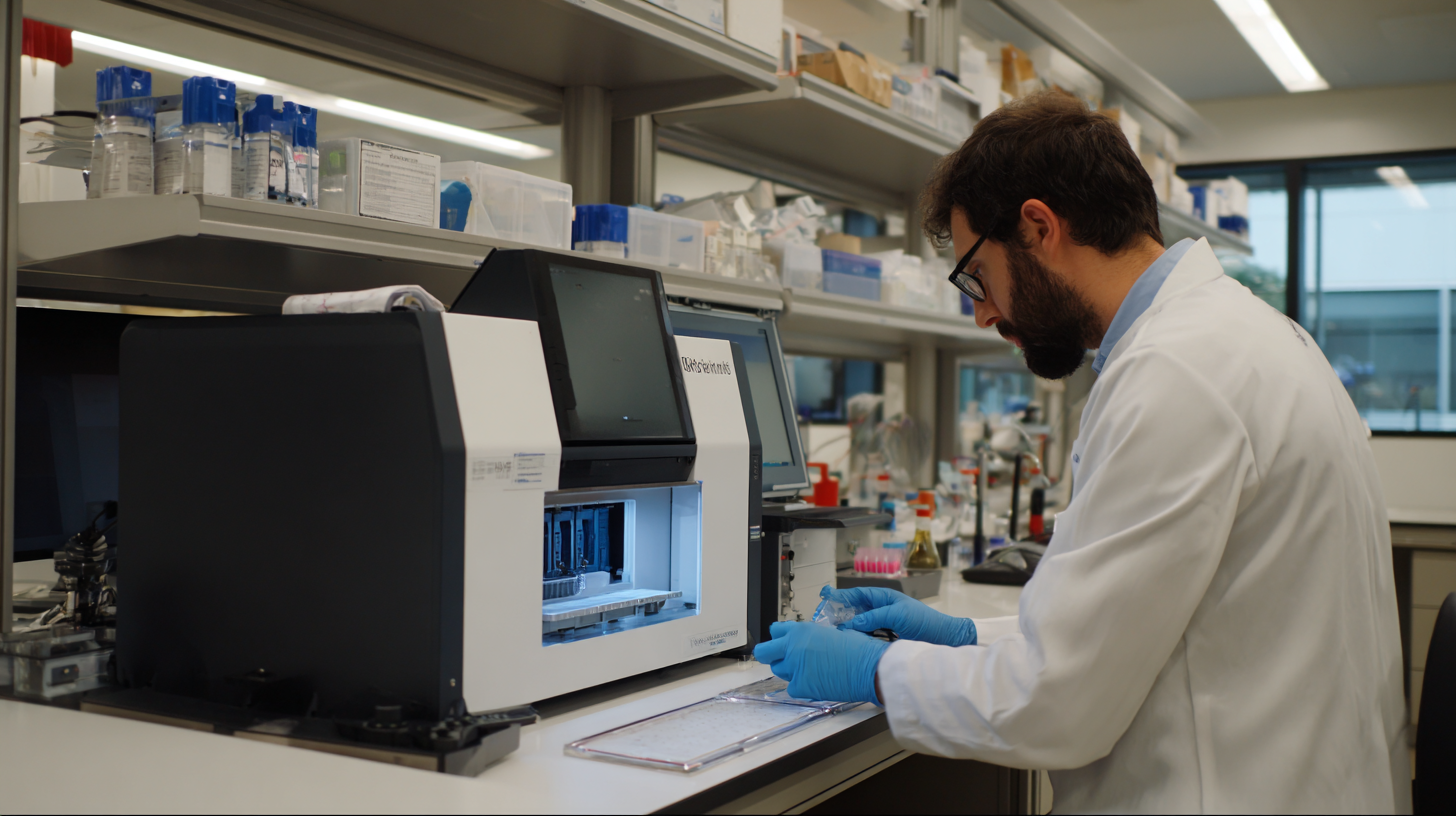Revolutionizing Research Efficiency through Lab Robotics and Automated Workflows in Life Sciences
In recent years, the life sciences sector has witnessed a transformative shift towards enhanced research efficiency, driven by advancements in lab robotics and automated workflows. According to a report by the International Federation of Robotics, the adoption of robotics in laboratories is expected to increase by over 30% in the next five years. This surge is largely attributed to a growing demand for high-throughput screening processes and the need for precision in experimental procedures.

Furthermore, a study published by the BioIndustry Association reveals that streamlining research processes through automation could accelerate drug development timelines by as much as 50%. As institutions strive to optimize their research capabilities, the integration of lab robotics not only minimizes human error but also liberates researchers from repetitive tasks, allowing them to focus on innovative problem-solving and critical analysis. This paradigm shift not only enhances productivity but also positions laboratories at the forefront of scientific discovery in an increasingly competitive landscape.
Transforming Research Paradigms: The Role of Robotics in Life Sciences Laboratories
The integration of robotics in life sciences laboratories is not merely a technological trend; it represents a paradigm shift in how research is conducted. Recent data indicates that laboratories using robotic automation can reduce their operational costs by up to 30%, drastically improving the efficiency of experimental workflows. Automating repetitive tasks allows researchers to focus on innovation rather than routine, thereby accelerating the discovery process. A study by Frost & Sullivan suggests that the global lab automation market is projected to reach $5.4 billion by 2025, underscoring the growing reliance on robotics in enhancing laboratory productivity.
Incorporating robotics into laboratory environments also mitigates human error, a critical factor that can affect research outcomes. For example, a report from the National Institute of Health highlights that up to 40% of research studies are susceptible to errors due to manual handling. As laboratories increasingly adopt automated workflows, researchers can achieve higher levels of precision and reproducibility in their experiments.
**Tips for Implementation:** Start small by automating high-volume, low-complexity tasks such as liquid handling or sample preparation. Assess the impact of these changes before scaling to more intricate processes. Additionally, considering partnerships with robotics vendors can provide you with tailored solutions that meet specific lab needs, ultimately leading to a smoother transition towards automation in your research environment.
Impact of Robotics on Research Efficiency in Life Sciences
This chart illustrates the significant time savings achieved through the implementation of automated workflows and lab robotics in life sciences research. The manual process typically requires around 40 hours per week, whereas transitioning to automation can reduce this to approximately 15 hours, demonstrating the transformative potential of robotics in enhancing research efficiency.
Enhancing Data Accuracy and Speed: The Impact of Automation on Experimentation
The integration of automation in life sciences laboratories has redefined the landscape of experimentation, significantly enhancing both data accuracy and the speed of research processes. Automated workflows streamline repetitive tasks, reducing human error that often plagues manual procedures. For instance, precision liquid handling robots can perform tasks with microliter accuracy, ensuring that experimental conditions are consistently replicated. This high degree of precision is crucial when working with sensitive samples, where slight variations can lead to vastly different outcomes.
Moreover, the speed at which experiments can be conducted has dramatically improved. With automated systems, multiple experiments can be run simultaneously, drastically cutting down the time from conception to results. High-throughput screening is a prime example, allowing researchers to test thousands of compounds quickly and efficiently. This acceleration not only advances individual research projects but also accelerates discoveries in critical fields such as drug development and genomics, fostering an environment where innovation can flourish without the bottlenecks created by traditional methods.
In essence, automation is not just enhancing efficiency; it is unlocking new possibilities in life sciences research.
Cost-Benefit Analysis: ROI of Implementing Automated Workflows in Research
The implementation of automated workflows in life sciences research is transforming operational efficiency and offers a compelling cost-benefit analysis for organizations. As companies invest in advanced technologies, such as AI and robotics, the ability to streamline processes can significantly enhance productivity and reduce overhead costs. The ongoing research indicates that while many companies are recognizing the potential of automation, only a small percentage feel fully equipped to harness its capabilities. This gap underscores the need for comprehensive strategies to ensure that organizations can leverage these tools effectively to maximize their return on investment (ROI).

Beyond mere cost reduction, automated workflows facilitate improved accuracy and consistency in experimental procedures. By integrating AI-driven systems, researchers can minimize human error and optimize time-consuming tasks, freeing up valuable resources for more complex analyses. As highlighted in various industry reports, understanding the ROI of AI and automation initiatives is crucial for successful implementation. Companies that effectively integrate these technologies not only enhance efficiency but also position themselves for scaled growth, ultimately reshaping the economic landscape of research and development in the life sciences sector.
Case Studies: Successful Integration of Robotics in Top Life Sciences Institutions
In recent years, several leading life sciences institutions have successfully integrated lab robotics and automated workflows, significantly enhancing their research capabilities. For instance, the Broad Institute has adopted advanced robotic systems to automate high-throughput sequencing. This transition has reduced the time required for genomic analyses, allowing researchers to rapidly gather and process vast amounts of genetic data. The implementation of robotics not only accelerates workflows but also minimizes human error, fostering more accurate and reproducible results in critical research projects.
Similarly, the Scripps Research Institute has incorporated sophisticated robotic liquid handling platforms into their drug discovery efforts. By automating routine tasks, such as compound management and assay preparation, Scripps researchers can focus on creative problem-solving and complex experimental designs. This shift enables the laboratory environment to handle a greater volume of experiments, ultimately leading to faster identification of potential therapeutic candidates. The successful case studies from these institutions demonstrate that the strategic use of robotics in life sciences is paving the way for more efficient and innovative research methodologies.
Revolutionizing Research Efficiency through Lab Robotics and Automated Workflows in Life Sciences
| Institution | Robotic Technology | Application Area | Efficiency Improvement (%) | Case Study Highlights |
|---|---|---|---|---|
| Institution A | Liquid Handling Robot | High-throughput Screening | 40% | Reduced sample processing time from hours to minutes. |
| Institution B | Automated Pipetting System | Genetic Testing | 35% | Enhanced accuracy in sample preparation. |
| Institution C | Lab Automation Software | Cell Culture | 50% | Streamlined workflow with real-time monitoring. |
| Institution D | Robotic Arm | Sample Analysis | 45% | Improved data collection speed and consistency. |
| Institution E | Automated Storage System | Sample Management | 30% | Reduced manual handling risks and errors. |
Future Prospects: AI and Robotics Shaping the Next Generation of Scientific Research
The rapid advancement of artificial intelligence (AI) and robotics is poised to revolutionize the landscape of scientific research in life sciences. As highlighted in recent discussions at prominent forums, the integration of AI technologies can significantly enhance research efficiency through automated workflows. By leveraging machine learning algorithms and robotic systems, researchers can streamline experimentation processes, improve data analysis, and accelerate the pace of scientific discoveries. This transformation not only saves valuable time and resources but also opens new avenues for innovation in research methodologies.

Looking ahead, the potential for AI and robotics to shape the future of scientific inquiry is immense. Predictions indicate that the global AI market will experience exponential growth, further fueling advancements that could redefine traditional research paradigms. Notably, emerging AI tools are being developed to assist researchers in scientific discovery, thereby amplifying human capabilities. As the demand for skilled professionals in STEM and biotechnology fields rises, the synergy between human intellect and intelligent machines promises to facilitate groundbreaking breakthroughs, fostering an environment where scientific exploration knows no bounds.
Related Posts
-

Maximizing Efficiency with Logistics Robotics A Comprehensive How to Guide
-

The Future of Robotics Automation Transforming Industries with Data Driven Innovations
-

Challenges Faced by Industries Embracing Robotics and Automation
-

Ultimate Guide to Mastering Agile Robotics for Business Success
-

Robotics Automation: A Comparative Analysis of Leading Solutions for Global Buyers
-

5 Best Innovations in Robotics Automation Transforming Industries